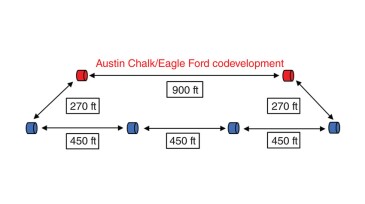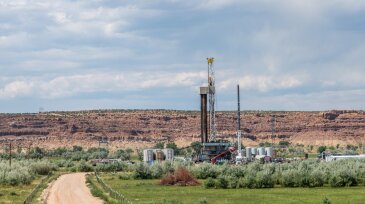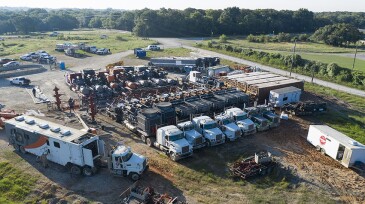Unconventional/complex reservoirs
The $100-billion project is widely considered the largest unconventional development outside of the US and is noted by Aramco as the largest nonassociated gas development in the kingdom.
This paper presents a study of trapped-torque incidents during drillpipe connection, highlighting contributing factors and root causes and proposing prevention and mitigation measures for these transient events.
In this study, a method was developed to analyze the effects of drilling through transitions on bit-cutting structures and construct an ideal drilling strategy using a detailed drilling model.
-
The authors investigate the utility of applying unconventional technology to low- or variably producing carbonate reservoirs to increase estimated ultimate recovery and decrease development-scale variability.
-
Unconventional reservoirs bear a unique perplexity in that, at every scale, they are different from their conventional counterparts and even one another. This month’s selection of papers is all about those differences.
-
The acquisition underscores the rapid rise of the unconventional oil play in northeastern Utah that producers claim offers better margins than the Permian Basin.
-
Pilots and papers are plentiful, but the shale sector has no big enhanced oil recovery projects to speak of. It may just have to stay that way for a while.
-
Operators tell an audience at the Unconventional Resources Technology Conference how a hybrid expandable liner system and machine-learning-based analysis improve the bottom line.
-
After another year of significant consolidation in the US shale sector, Enverus has released its annual list of the nation's largest private exploration companies.
-
Machine learning is refining gas lift production optimization with scalable automated workflow.
-
The Permian’s produced-water challenge presents an opportunity for innovation to pave the way toward a more sustainable future for the industry.
-
The Dallas-based tight oil producer will gain 33,500 acres and approximately 25,500 BOE/D from the latest deal to reshape the US shale sector.
-
Hunt Energy Network invested $10 million into Quidnet to help scale up the company’s concept for geopressured energy storage to the tune of 300 MW.













